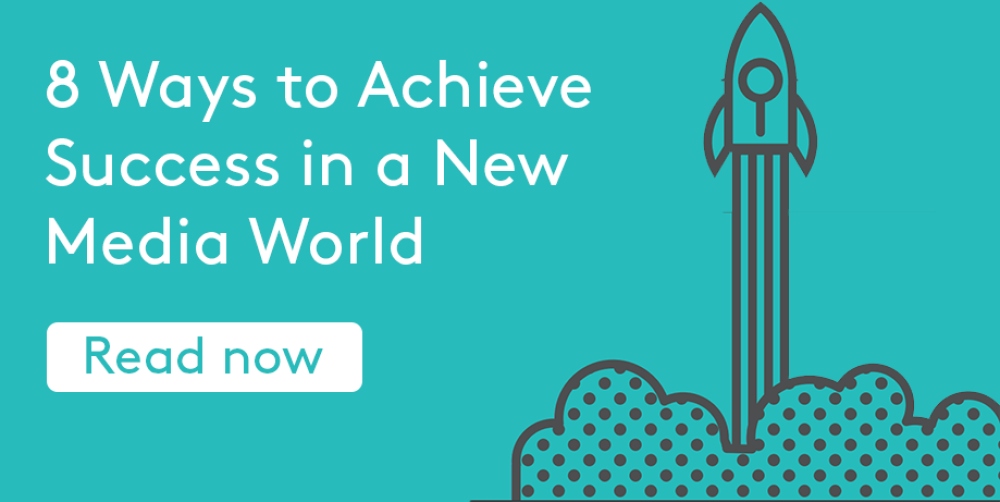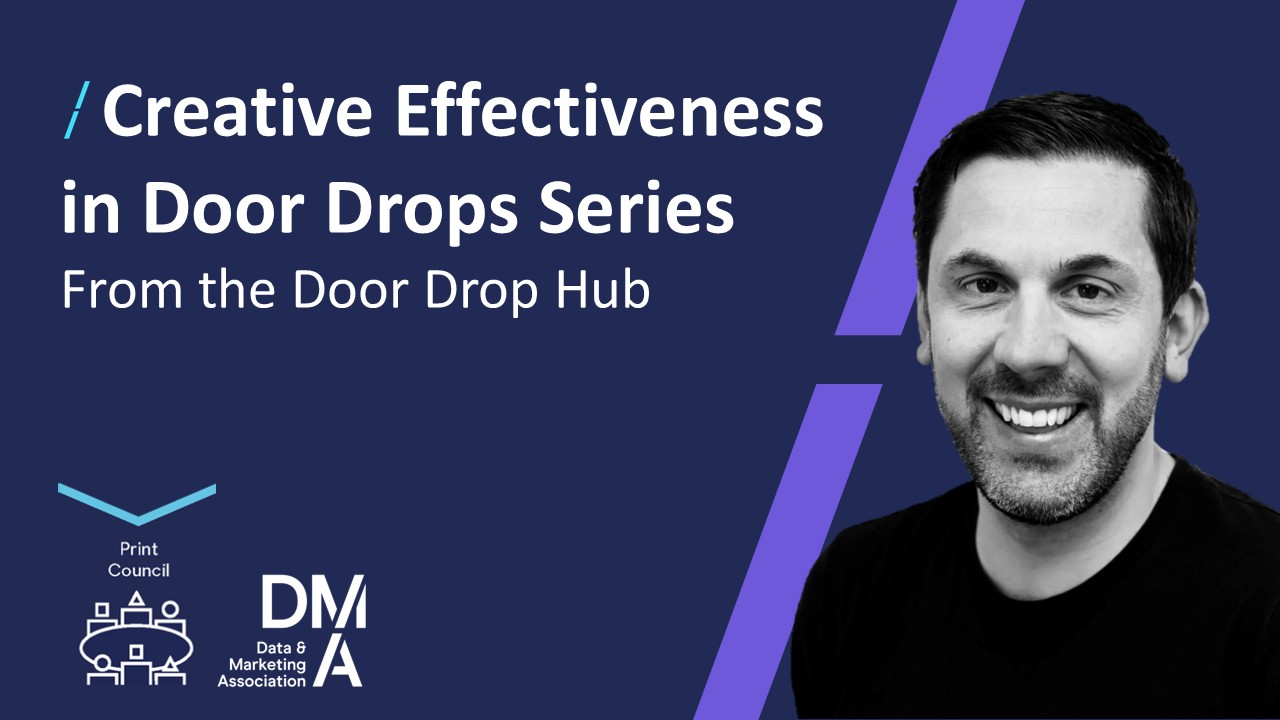8 Ways to Achieve Success in a New Media World
27 Nov 2017

This blog was originally published on Meltwater
Digital channels have completely changed the way in which we communicate brand messages, but does your brand’s current communication strategy reflect this? In this blog, we’ll be discussing ways to achieve success in the new media world by overcoming such challenges.
Personalities over corporate voice
Everywhere we look internet users are posting memes, gifs and funny/cute videos. Our audiences want to communicate with a human, rather than a brand.
As well as humanising our brand’s tone of voice by creating a brand personality (e.g. for Meltwater, our brand personality is smart but friendly), we should also allow our colleagues to let their personalities come through. We can do this by asking them to contribute to our blog and social media platforms.
Tone of voice enhances customer experience, drives culture, humanises our brand and encourages interaction, so it’s definitely worth moving away from an overly corporate approach to a more personable one.
Top tip: Keep your tone conversational to boost engagement! We should ask questions, join conversations and share valuable input. Also, don’t be a yes man- if you disagree with how the conversation is going explain why you think differently – just make sure that the opinion is in line with your company’s vision and not just your opinion.
Involve bloggers and influencers
There are many benefits of having influencers involved with our brand. They can create trust, fresh content, credibility and expand our brand’s reach by enabling us to piggyback onto their engaged community.
We don’t necessarily have to reach out to someone with millions of followers. Microbloggers or vloggers with a small, engaged audience can be hugely beneficial for our brands. For example, Time to Change used Meltwater’s media monitoring to look for small bloggers discussing mental health in order to praise the “unsung heroes with great wisdom to share”. This strategy helped them to benefit from user-generated content and empowered their community to continue to share their experiences.
Top Tip: Don’t underestimate the need for nurturing our relationships influencers and bloggers. We can’t expect an influencer to promote us, without any relationship in place. Take time to build a relationship and it will pay off. Read our blog on influencer marketing on a limited budget for more top tips.
Know your audience
It’s so important to understand our audiences, for example, do you know the ways they like to be contacted and what content resonates with them? We should consider how demographics vary based on the social media platform our audience choose to use. We may need to adapt our approach to each platform, you see.
We can discover the demographics of our social media audience using Meltwater engage. Easily understand the age and gender of our audience. If used in combination with buyer personas, we can create an agile strategy, suitable for different types of members. This will help personalise our messaging ensuring it resonates better.

Nurture your community
As discovered in our charity industry report, having a large community doesn’t equal large amounts of engagement. Cancer Research had the most social media followers, yet ranked 6th out of the 10 charities based on the amount their community engaged with them.
Instead of focusing on building a huge following, we should also aim to nurture our community. Marie Ennis-O’Connor, a PR practitioner, has a whole article on finding, growing and nurturing your community – which we’d definitely recommend having a read of!
One of our top takeaways from the article is ‘collaboration, not control’. Aim to answer their questions, retweet and favourite their content. As mentioned above, co-creating content and user-generated content are great ways to build engagement (as well as relationships).
Use video and images
Facebook currently prioritises video over other forms of content. This means that posting a video, rather than text is likely to improve our brand message reach. Other platforms such as Instagram and Snapchat are almost solely image and video-based, so it makes sense to use plenty of photos and videos in our comms strategy. Furthermore, according to one study, videos generate 1200% more shares than images and text combined!
Top tip: We shouldn’t be afraid to use video if our budget doesn’t permit professional filming and editing. Amature footage only adds to our brands’ human traits.
Don’t always pitch your product
It’s easy to fall into the trap of constantly pushing our product and services. It can be hard to know what to post on social media, particularly if our brand isn’t B2C. Clothing and beauty brands naturally fit well on social media because of their visual nature. But don’t worry! Less visual brands can be successful too! Whether we sell parcels, software or paper, we can still be interesting online. Instead of pitching our product, we should aim to educate our audiences with the wider goings on in our industry.
Here are a few ideas for ways to be active online without pushing our products:
- Show the culture of our company: staff members, charity work, particular quirks, a day in the life of posts
- People using our product
- Re-posting user-generated content
- Posting industry news
- Behind the scenes videos
Continuously analyse
We need to consistently measure and adapt our strategy to ensure its competitive. Building relationships with journalists, bloggers and our online communities take time. So, don’t expect instant results.
Use media intelligence to track media exposure. Has the number of brand mentions increased since launching our campaign or new product? What are the trending themes surrounding our coverage? Where are people discussing our brand? These kinds of insights can give us an understanding of not only the effect of our efforts but also potential opportunities.
Liverpool School of Tropical Medicine, continuously analyse their PR efforts to spot potential further opportunities. If their research is gaining traction across a particular area of the world, this provides an opportunity for further coverage and audience development.
If we do this for social media coverage as well, we can understand potential gaps of opportunity in our current strategy and adapt our what we’re doing accordingly.
Responsiveness
Our customers expect almost instant responses to their complaints and queries on social media, especially on Twitter. Many of us are juggling so many balls in our day to day roles, making keeping on top of our social media mentions a struggle! However, if we don’t respond quickly, our competitors may sweep in.
Use social listening to stay on top of mentions. Our engage tool allows users to get an overview of all social media profile so we can easily respond to complaints and queries without having to log into multiple platforms. Not only this, but we can understand how the relationship is developing by using the built-in CRM system. We can also prioritise complaints based on the user’s influence.
If you’d like to understand more about how Meltwater can help you achieve success in the new media world, send us an email hello@meltwater.com
Further Reading:
Influencer marketing on a budget
10 Tips to boosting engagement on social media
Creating staff brand ambassadors with social media guidelines
10 easy ways to get more likes on your Facebook business page





Please login to comment.
Comments